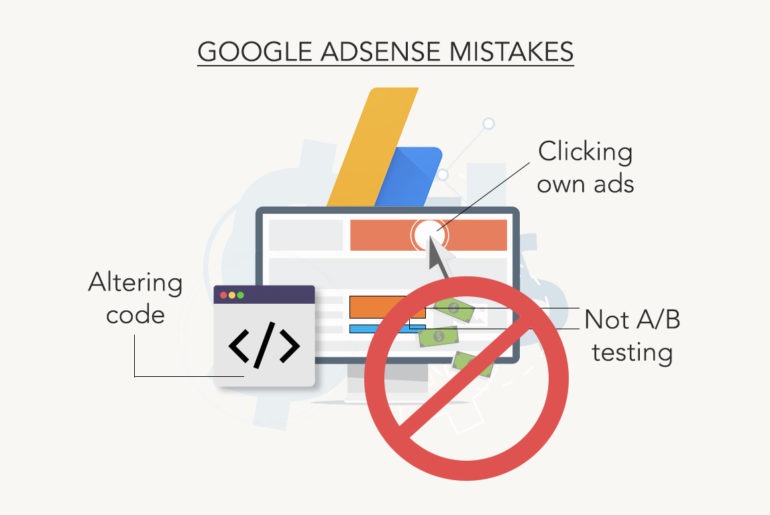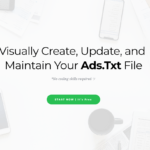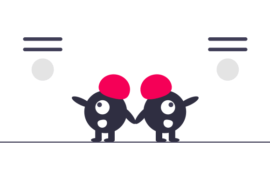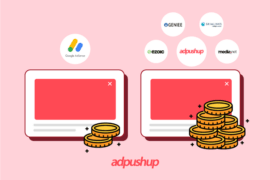Avoiding AdSense mistakes should be the first step to increase ad revenue. Here are 15 AdSense mistakes publishers should start correcting today.
AdSense accounts are relatively easy to get but they come with their own set of challenges.
For the unaware, Google AdSense is a free ad network provided by Google to web publishers. But it has a strict set of policies to get approved and use the services.
Once AdSense approves a publisher, it’s pretty easy to get started and to run ads on the website. Use of AdSense doesn’t require professional expertise or technical knowledge. Furthermore, one can make decent money with AdSense if done the right way.
However, some publishers try to implement cheat methods to make more money and end up getting banned by AdSense. And, some don’t put the time in optimizing AdSense and start their losing ad revenue.
Such mistakes are common. So here, we are discussing fifteen AdSense mistakes often made by publishers, and their possible solutions:
1. Not A/B Testing With Ad Units
Ads are all about testing. A publisher needs to experiment with different ad units and test with multiple channels to figure out the best working ad placement. Furthermore, the testing should be an ongoing process. Meaning, you as a publisher need to keep testing with multiple sets of ad units. Ad testing may include experimenting with color schema, background, ad types, format, and size.
Creating an elaborated report of your tests and running ads based on the generated data results in better CTR. For publishers new to AdSense, starting with Auto Ads feature of AdSense is a good practice. And then gradually moving to the testing and experimenting feature of AdSense should make sense
2. Not Following Google AdSense Policies
As mentioned, AdSense has a strict policy. It is always recommended for publishers to read and understand the terms of AdSense properly, before getting started. In case of any doubt, publishers can write an email to Google. Or they can try Google Product Forum and get answers from other users and professionals.
3. Altering The AdSense Code
No tweaking with Google AdSense code. Google is very clear about the code alteration policy. Furthermore, the ad code and search code should never be edited. All this affects the ad targeting and conversion for advertisers. Also, the ads should be titled with ‘Advertisement’ or ‘Sponsored Links’. Any other heading can lead to a deduction from AdSense net earnings.
4. Creating Multiple AdSense Accounts
AdSense allows publishers to operate multiple websites within a single account. Hence, In case you have more than one website, you can operate them with one AdSense account. Google does this to make sure you receive payment under the name of a single payee. In case your existing account is not working then you should contact Google and get answers rather than creating a new AdSense account.
5. Sending Emails With Ads
Google finds it against the policy to send AdSense ad code embedded in an email. In case Google finds out that an impression is registered from an email, strict actions (like blocking AdSense account) can be taken against the publisher.
6. Clicking On Your Own Ads
Clicking on your own ad is an invalid activity. Google specializes in monitoring invalid activities across the web. Publishers are not permitted to click on their own ads. However, Google understands a publisher can click on own ads by mistake. Hence, in such a case, it recommends publishers to immediately report Google about the mistake so Google can take charge from there accordingly.
7. Associating With Click Farms or Bot Traffic
Bot traffic and invalid traffic is a big NO when running AdSense ads. Google uses machine learning to identify non-human traffic. If too much suspicious traffic is marked, Google can deduct an amount from the publisher’s net earning and might also end up banning the publisher.
8. Placing Too Many Ads
Ideally, AdSense asks publishers to place not more than three ad units on a single web page. However, some publishers add even more than five ad units in hopes of earning more revenue. Such activities only degrade the user experience and affect the fill rate of the webpage. And if not corrected, AdSense can also seize the publisher’s earnings.
Some publishers like to experiment with multiple ad units, which is a recommended way to try. However, in doing so, they end up placing too many ad units resulting in penalty. One thing to know here is AdSense ad units are sold at varied CPM, hence when you place too many ad units, the cumulative revenue might seem to improve, but on the contrary it results in low fill rate.
9. Adding Ads That Affects User’s Experience
Talking about user experience, not just the number of ad units but also the placement of ads matters while using AdSense. If you place three or more ad units above the fold without giving proper space for content, this will drastically affect the user experience. As a result, the user might start using ad blocker. Hence, publishers are advised to make it right by following the best practices.
10. Using Copied or Copyright Content
Original content is always appreciated by Google. People often think that content only affects search engine ranking. But from time to time, reports have shown that original quality content has always increased both earnings and reputation for publishers.
At the same time, AdSense advertising policies encourage publishers to steer clear from plagiarizing content or using copyright material without approval.
11. Non-User Friendly or Objectionable Content
Adult, harmful, and profane content is not allowed on AdSense ads. Other than the mentioned category, there are more types of content which Google doesn’t allow. The same practice is also advised to advertisers who use Google Ads.
12. Hosting Illegal or Unauthorized Content
Selling piracy content, display of illegal activity (depending on geographical location as well) and download links for malicious software are also not allowed by AdSense. If you own a website related to any of there types of content may not be able to access your AdSense account.
13. Placing Ads On Pages Like 404, Contact, And Privacy Policy
AdSense doesn’t encourage ads on certain web pages of the website, such as:
- Privacy policy
- Disclaimer
- Terms and condition
- Contact page
- Sitemap
- 404 error
- Blank page
Only content pages with maximum user activity should display ads.
14. Video Without Any Description
This is one of the most common AdSense mistakes made by publishers. Adding video (from YouTube, DailyMotion, or original upload) can surely attract users. But Google can’t actually scan the video until it has a written description.
Hence, a written description of the video is important for the video to be not considered as a blank page. Providing at least 300-word description of the video content is a good strategy that also works for SEO of the page.
15. Using Non-Supported Language
There are a handful of languages supported by Google AdSense. If your website shows content related to one of the non-supported languages, Google will likely not approve your AdSense request. Also, if you change the language after getting the approval, then you might find your AdSense account is removed.
Final Thoughts On AdSense Mistakes
We have discussed some of the common AdSense mistakes made by publishers. AdSense is always clear about their policy. Hence, it becomes the publisher’s duty to be cautious and stay updated with policy changes. Some terms are pretty clear (like not altering the AdSense code), while others may sound tricky (like maintaining a standard for user experience).

Shubham is a digital marketer with rich experience working in the advertisement technology industry. He has vast experience in the programmatic industry, driving business strategy and scaling functions including but not limited to growth and marketing, Operations, process optimization, and Sales.








9 Comments
So nice post and detailed description about adsense.
In no 6 you told that we should contact if we accidently cloicked on our own ads, but how can we contact… if i am a new publisher but accidently clicked on it… then how can i contact them… there is no way to contact them you know…
Hey Bhabishya,
Accidentally clicks on own ad units are common. And if clicks are not frequent and spammy, Google will let go of such mistakes. I understand, for new users, it can be daunting task to contact AdSense. But you can try here.
Did you click on your own ads? If you could explain the problem you are facing, I’ll be able to offer a more detailed answer.
Thanks,
Rashmita
Hi Rashmita Behera, I’m interested in knowing how you get rid of bot traffic on your website. In a situation whereby a publisher is targeted by bot traffic, which leads to spam comments and invalid activities, how do you prevent that from happening?
Hey Matt,
You can’t completely get rid of bot traffic on your site. Also, your website needs some of the bots like Google search bots to crawl the site. However, you can certainly remove the bot traffic from corrupting the user/audience report. Using Google AdSense, you can filter out the invalid bot traffic for free.
Feel free to reach out again.
Thanks,
Rashmita
Thanks for the article. Do I need to write every articles with 500+ words ?
Word length for each post depends on a lot of factors – how much explanation topic deserves, word length of already ranking posts, and what according to you is right number to create contextually relevant post for your audience.
Here is a post for you to read: https://thewritepractice.com/blog-post-length/
If we disable comments on post will it have an affect on getting google adsense approval.
No, it shouldn’t.